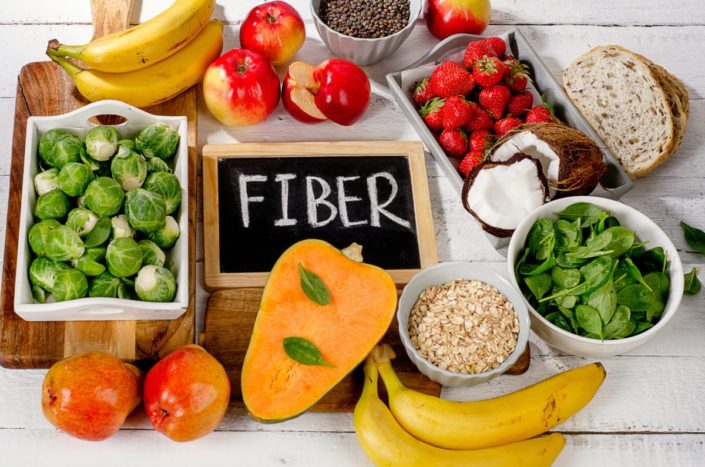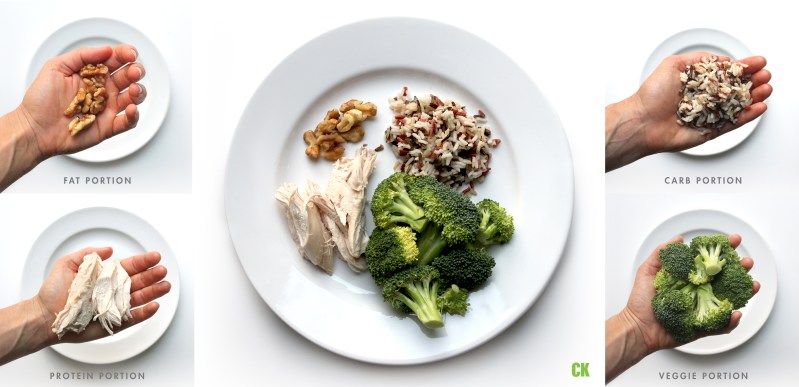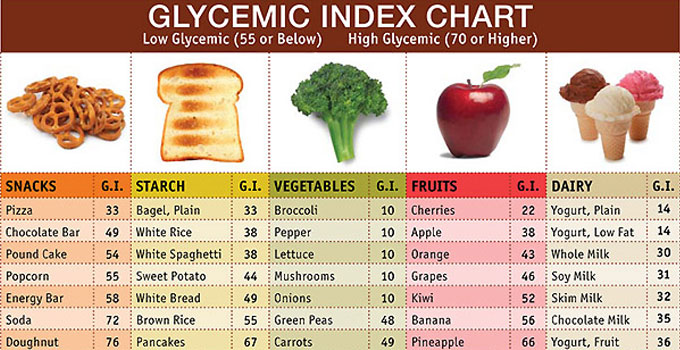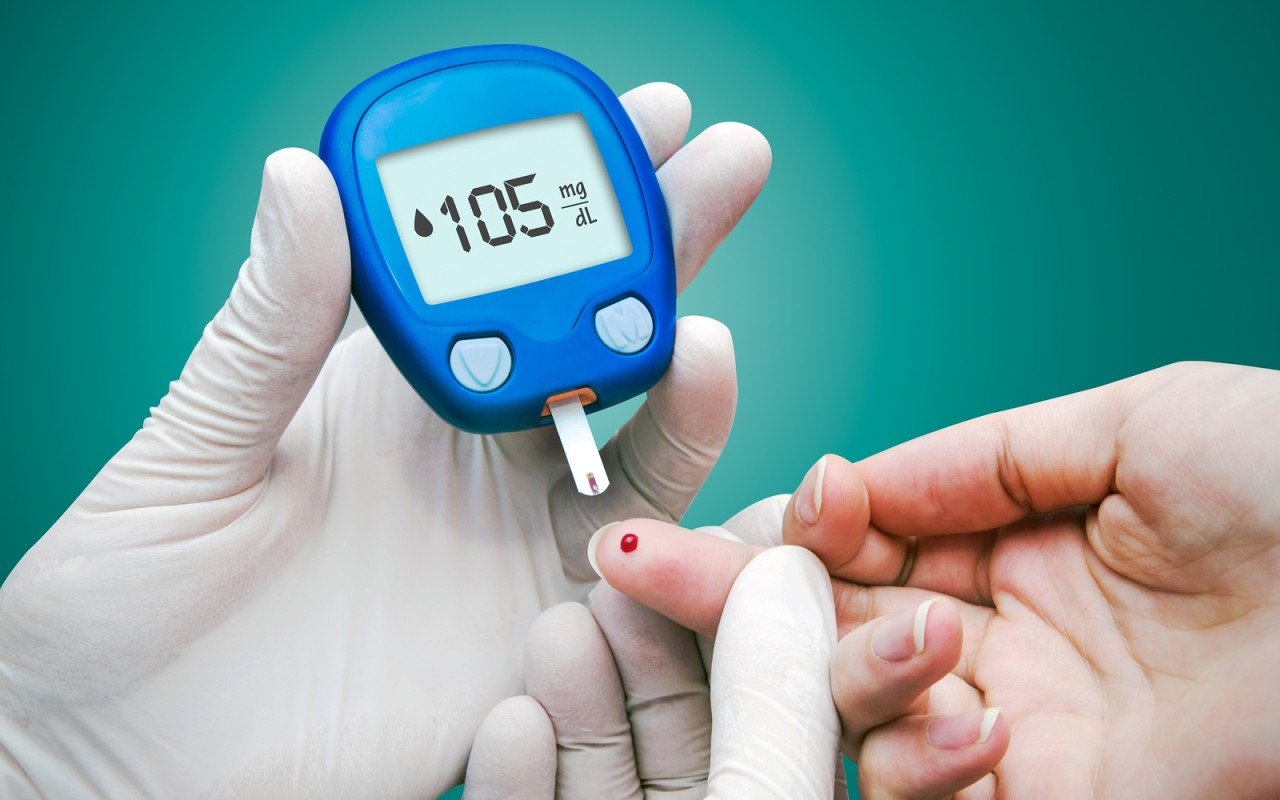High blood sugar occurs when your body can’t effectively transport sugar from blood into cells.
When left unchecked, this can lead to diabetes.
One study from 2012 reported that 12–14% of US adults had type 2 diabetes, while 37–38% were classified as pre-diabetic.
This means that 50% of all US adults have diabetes or pre-diabetes.
Here are the top 15 ways to lower blood sugar levels naturally:
15. Exercise Regularly

Regular exercise can help you lose weight and increase insulin sensitivity.
Increased insulin sensitivity means your cells are better able to use the available sugar in your bloodstream.
Exercise also helps your muscles use blood sugar for energy and muscle contraction.
If you have problems with blood sugar control, you should routinely check your levels. This will help you learn how you respond to different activities and keep your blood sugar levels from getting either too high or too low.
Good forms of exercise include weight lifting, brisk walking, running, biking, dancing, hiking, swimming and more.
BOTTOM LINE: Exercise increases insulin sensitivity and helps your muscles pick up sugars from the blood. This can lead to reduced blood sugar levels.
14. Control Your Carb Intake

Your body breaks carbs down into sugars (mostly glucose), and then insulin moves the sugars into cells.
When you eat too many carbs or have problems with insulin function, this process fails and blood glucose levels rise.
However, there are several things you can do about this.
The American Diabetes Association (ADA) recommends controlling carb intake by counting carbs or using a food exchange system.
Some studies find that these methods can also help you plan your meals appropriately, which may further improve blood sugar control.
Many studies also show that a low-carb diet helps reduce blood sugar levels and prevent blood sugar spikes.
What’s more, a low-carb diet can help control blood sugar levels in the long run.
You can read more in this article on healthy low-carb eating with diabetes.
BOTTOM LINE: Carbs are broken down into glucose, which raises blood sugar levels. Reducing carbohydrate intake can help with blood sugar control.
13. Increase Your Fiber Intake

Fiber slows carb digestion and sugar absorption. For these reasons, it promotes a more gradual rise in blood sugar levels.
Furthermore, the type of fiber you eat may play a role.
There are two kinds of fiber: insoluble and soluble. While both are important, soluble fiber specifically has been shown to lower blood sugar levels.
Additionally, a high-fiber diet can help manage type 1 diabetes by improving blood sugar control and reducing blood sugar lows.
Foods that are high in fiber include vegetables, fruits, legumes and whole grains.
The recommended daily intake of fiber is about 25 grams for women and 38 grams for men. That’s about 14 grams for every 1,000 calories.
BOTTOM LINE: Eating plenty of fiber can help with blood sugar control, and soluble dietary fiber is the most effective.
12. Drink Water and Stay Hydrated

Drinking enough water may help you keep your blood sugar levels within healthy limits.
In addition to preventing dehydration, it helps your kidneys flush out the excess blood sugar through urine.
One observational study showed that those who drank more water had a lower risk of developing high blood sugar levels.
Drinking water regularly re-hydrates the blood, lowers blood sugar levels and reduces diabetes risk.Keep in mind that water and other non-caloric beverages are best. Sugar-sweetened drinks raise blood glucose, drive weight gain and increase diabetes risk.
BOTTOM LINE: Staying hydrated can reduce blood sugar levels and help prevent diabetes. Water is best.
11. Implement Portion Control

Portion control helps regulate calorie intake and can lead to weight loss.
Consequently, controlling your weight promotes healthy blood sugar levels and has been shown to reduce the risk of developing type 2 diabetes.
Monitoring your serving sizes also helps reduce calorie intake and subsequent blood sugar spikes.
Here are some helpful tips for controlling portions:
- Measure and weigh portions.
- Use smaller plates.
- Avoid all-you-can-eat restaurants.
- Read food labels and check the serving sizes.
- Keep a food journal.
- Eat slowly.
BOTTOM LINE: The more control you have over your serving sizes the better control you will have over your blood sugar levels.
10. Choose Foods With a Low Glycemic Index

The glycemic index was developed to assess the body’s blood sugar response to foods that contain carbs.
Both the amount and type of carbs determine how a food affects blood sugar levels.
Eating low-glycemic-index foods has been shown to reduce long-term blood sugar levels in type 1 and type 2 diabetics.
Although the glycemic index of foods is important, the amount of carbs consumed also matters.
Foods with a low glycemic index include seafood, meat, eggs, oats, barley, beans, lentils, legumes, sweet potatoes, corn, yams, most fruits and non-starchy vegetables.
BOTTOM LINE: It’s important to choose foods with a low glycemic index and watch your overall carb intake.
9. Control Stress Levels

Stress can affect your blood sugar levels.
Hormones such as glucagon and cortisol are secreted during stress. These hormones cause blood sugar levels to go up.
One study showed that exercise, relaxation and meditation significantly reduced stress and lowered blood sugar levels for students.
Exercises and relaxation methods like yoga and mindfulness-based stress reduction can also correct insulin secretion problems in chronic diabetes.
BOTTOM LINE: Controlling stress levels through exercise or relaxation methods such as yoga will help you control blood sugars.

“What gets measured gets managed.”
Measuring and monitoring blood glucose levels can also help you control them.
For example, keeping track helps you determine whether you need to make adjustments in meals or medications.
It will also help you find out how your body reacts to certain foods.
Try measuring your levels every day, and keeping track of the numbers in a log.
BOTTOM LINE: Checking your sugars and maintaining a log every day will help you adjust foods and medications to decrease your sugar levels.
7. Get Enough Quality Sleep

Getting enough sleep feels great and is necessary for good health.
Poor sleeping habits and a lack of rest also affect blood sugar levels and insulin sensitivity. They can increase appetite and promote weight gain.
Sleep deprivation decreases the release of growth hormones and increases cortisol levels. Both of these play an important role in blood sugar control.
Furthermore, good sleep is about both quantity and quality. It is best to get a sufficient amount of high-quality sleep every night.
BOTTOM LINE: Good sleep helps maintain blood sugar control and promote a healthy weight. Poor sleep can disrupt important metabolic hormones.
6. Eat Foods Rich in Chromium and Magnesium

High blood sugar levels and diabetes have also been linked to micronutrient deficiencies.
Examples include deficiencies in the minerals chromium and magnesium.
Chromium is involved in carb and fat metabolism. It also helps control blood sugar levels, and a lack of chromium may predispose you to carb intolerance.
However, the mechanisms behind this are not completely known. Studies also report mixed findings.
Two studies of diabetes patients showed that chromium had benefits for long-term blood sugar control. However, another study showed no benefits.
Chromium-rich foods include egg yolks, whole-grain products, high-bran cereals, coffee, nuts, green beans, broccoli and meat.
Magnesium has also been shown to benefit blood sugar levels, and magnesium deficiency has been linked to a higher risk of developing diabetes.
In one study, people with the highest magnesium intake had a 47% lower risk of becoming diabetic.
However, if you already eat plenty of magnesium-rich foods, then you probably will not benefit from supplements.
Magnesium-rich foods include dark leafy greens, whole grains, fish, dark chocolate, bananas, avocados and beans.
BOTTOM LINE: Eating foods rich in chromium and magnesium on a regular basis can help prevent deficiencies and reduce blood sugar problems.
5. Try Apple Cider Vinegar

Apple cider vinegar has many benefits for your health.
It promotes lower fasting blood sugar levels, possibly by decreasing its production by the liver or increasing its use by cells.
What’s more, studies show that vinegar significantly influences your body’s response to sugars and improves insulin sensitivity.
To incorporate apple cider vinegar into your diet, you can add it to salad dressings or mix 2 teaspoons in 8 ounces of water.
However, it’s important to check with your doctor before taking apple cider vinegar if you are already taking medications that lower blood sugar.
BOTTOM LINE: Adding apple cider vinegar to your diet can help your body in many ways, including reducing blood sugar levels.
4. Experiment With Cinnamon Extract

Cinnamon is known to have many health benefits.
For one, it has been shown to improve insulin sensitivity by decreasing insulin resistance at the cellular level.
Studies show cinnamon can also lower blood sugar levels by up to 29%.
It slows the breakdown of carbs in the digestive tract, which moderates the rise in blood sugar after a meal.
Cinnamon also acts in a similar way as insulin, although at a much slower rate.
An effective dose is 1–6 grams of cinnamon per day, or about 0.5–2 teaspoons.
However, definitely don’t take more than that since too much cinnamon can be harmful.
BOTTOM LINE: Cinnamon has been shown to reduce fasting blood sugar levels and improve insulin sensitivity.
3. Try Berberine

Berberine is the active component of a Chinese herb that’s been used to treat diabetes for thousands of years.
Berberine has been shown to help lower blood sugar and enhance the breakdown of carbs for energy.
What’s more, berberine may be as effective as some blood sugar lowering drugs. This makes it one of the most effective supplements for those with diabetes or pre-diabetes.
However, many of the mechanisms behind its effects are still unknown.
Additionally, it may have some side effects. Diarrhea, constipation, flatulence and abdominal pain have been reported.
A common dosage protocol is 1,500 mg per day, taken before meals as 3 doses of 500 mg.
BOTTOM LINE: Berberine works well for lowering blood sugar levels and can help manage diabetes. However, it may have some digestive side effects.
2. Eat Fenugreek Seeds

Fenugreek seeds are a great source of soluble fiber, which can help control blood sugar levels.
Many studies have shown that fenugreek can effectively lower blood sugar in diabetics. It also helps reduce fasting glucose and improve glucose tolerance.
Although not that popular, fenugreek can easily be added to baked goods to help treat diabetes. You can also make fenugreek flour or brew it into tea.
Fenugreek seeds are also considered one of the safest herbs for diabetes.
The recommended dose of fenugreek seeds is 2–5 grams per day.
BOTTOM LINE: Consider giving fenugreek seeds a try. They are easy to add to your diet and can help regulate blood glucose levels.
1. Lose Some Weight

It’s a no-brainer that maintaining a healthy weight will improve your health and prevent future health problems.
Weight control also promotes healthy blood sugar levels and has been shown to reduce your risk of developing diabetes.
Even a 7% reduction in body weight can decrease your risk of developing diabetes by up to 58%, and it seems to work even better than medication.
What’s more, these decreased risks can be sustained over the years.
You should also be conscious of your waistline, as it is perhaps the most important weight-related factor for estimating your diabetes risk.
A measurement of 35 inches (88.9 cm) or more for women and 40 inches (101.6 cm) or more for men is associated with an increased risk of developing insulin resistance, high blood sugar levels and type 2 diabetes.
Having a healthy waist measurement may be even more important than your overall weight.
BOTTOM LINE:Keeping a healthy weight and waistline will help you maintain normal blood sugar levels and decrease your risk of developing diabetes.


